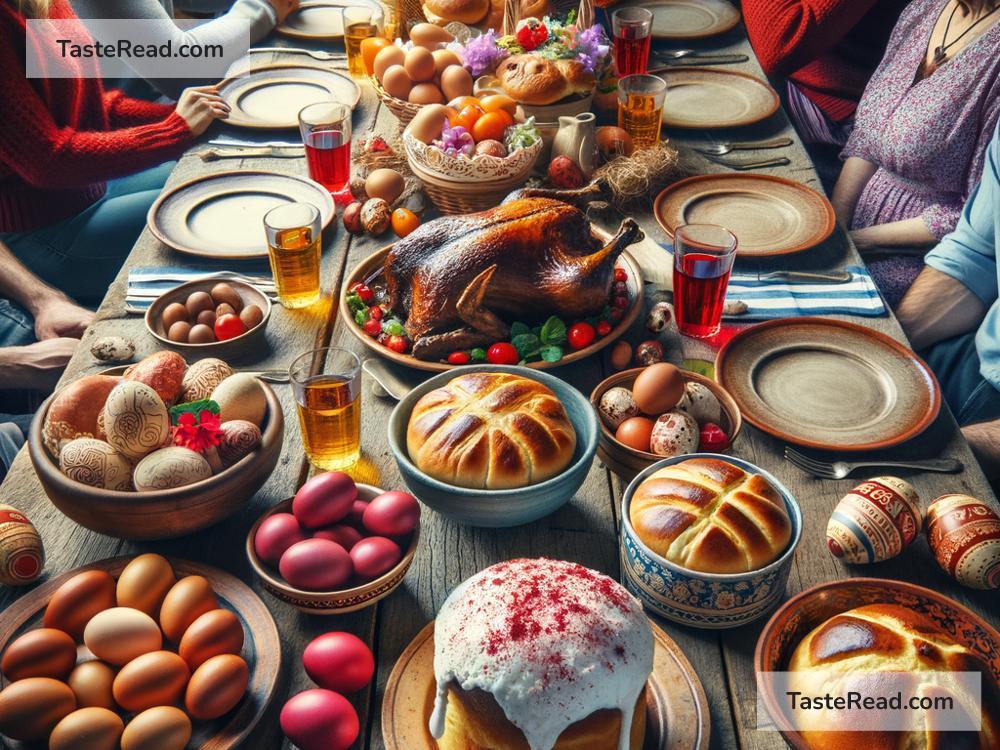Exploring the Cultural Importance of Greek Easter Dishes
Greek Easter, known as Pascha, is not just a religious celebration; it’s a vibrant showcase of culture, tradition, and culinary delight. This period is filled with an array of special dishes, each carrying its own unique taste and story. Understanding the cultural importance of these Greek Easter dishes gives us a deeper insight into the heart and soul of Greek life.
The Essence of Greek Easter
Easter in Greece is the most significant festival, more impactful than Christmas. It’s a time of joy, renewal, and family gatherings. The preparations and customs, including the foods, are steeped in history and tradition, making Greek Easter a uniquely rich cultural experience.
The Role of Fasting
The journey to Greek Easter begins with Lent, a 40-day period of fasting. During this time, Greeks follow a strict diet, abstaining from meat, poultry, fish, dairy products, and olive oil on certain days. This period of sacrifice and reflection makes the Easter feast even more appreciated, marking the end of Lent with a celebration of life, abundance, and gratitude.
The Star of the Show: Lamb
On Easter Sunday, the air in Greece is filled with the aroma of lamb roasting on the spit. Lamb is the centerpiece of the Easter meal, symbolizing the Lamb of God and representing sacrifice and rebirth. This tradition dates back to ancient times and is a pivotal aspect of the celebration. Families gather around the lamb, sharing stories, laughter, and creating memories.
Tsoureki: The Sweet Bread of Life
No Greek Easter table is complete without tsoureki, a sweet, brioche-like bread. It’s braided and often decorated with red eggs. The bread is rich, flavored with mahlab (an aromatic spice made from cherry seeds), making it uniquely delicious. Tsoureki carries deep symbolism; the braids symbolize the Holy Trinity, while the red eggs represent the blood of Christ and rebirth.
The Significance of Red Eggs
Speaking of red eggs, they’re more than just decorations. They are a key part of Greek Easter, symbolizing the resurrection of Jesus Christ. The tradition is to crack Easter eggs (a game known as tsougrisma), where each person chooses an egg and taps it against the eggs of others. The person whose egg lasts the longest is believed to have good luck for the rest of the year. This playful activity reflects the joy and hopeful spirit of Easter.
Magiritsa: Breaking the Fast
Magiritsa, a soup made from lamb offal, herbs, and lettuce, is traditionally eaten right after the midnight church service to break the fast. Its preparation varies from region to region but always serves as the initial meal that transitions participants from Lent to the celebration of Easter. Some might find its ingredients unusual, but magiritsa is a cherished dish, embodying the essence of resourcefulness and respect for life by using all parts of the lamb.
Cheese and Spinach Pies
Another staple during Easter are the various pies, especially those filled with cheese (tiropita) or spinach (spanakopita). These pies, made with layers of phyllo pastry, are a delight. They cater to both young and old, offering a lighter option amidst the assortment of rich dishes. Pies are a testament to the simple yet profound joy found in Greek cuisine.
Sweets and Desserts
Easter in Greece is also a time for sweets. Apart from tsoureki, households prepare an array of desserts like koulourakia (butter cookies) and galatopita (milk pie). These sweets, often flavored with citrus and spices, offer a delightful end to the meal. Sharing these desserts reinforces the sense of community and generosity, core values in Greek culture.
Conclusion
Greek Easter dishes are more than mere food; they are vessels of history, tradition, and shared humanity. Each dish tells a story of faith, resilience, and celebration. For Greeks, Easter isn’t just about commemorating the resurrection; it’s about the communal spirit, the joy of togetherness, and the honoring of traditions passed down through generations. By exploring the cultural significance of these dishes, we gain an appreciation for the depth and richness of Greek Easter, an occasion that splendidly marries the sacred with the celebratory.


